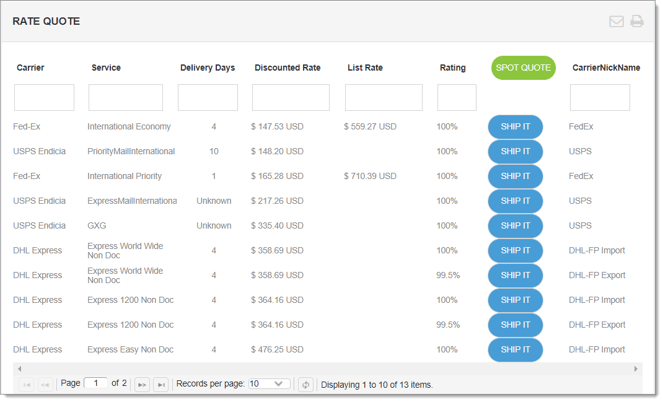Ultimate Parcel & Freight Guide - One Click Logistics eBook Bundle
We offer a complete eBook bundle for businesses that ship parcel and freight, with tips spanning the full supply chain cycle, from rates, digitizing...
2 min read
FreightPOP : Aug 17, 2020

Multi-carrier shipping software, or TMS, is powerful–giving a vital competitive edge that lets you shop rates faster, hold carriers accountable, and automate like never before!
If you're evaluating your current system or looking to purchase, be aware: not all shipping software is equal. However, most will help you reduce freight spend and give you better oversight on your supply chain. And robust shipping software is not as expensive as it used to be. Companies that ship even a small amount of regular shipments a month save with the right software.
So what are the best-in-class capabilities of multi-carrier shipping software?
You want to look for a smooth integration process, with as many of the below capabilities as possible!
The capability to rate shop across marketplace rates, your current contracted rates, TMS Partner Rates, and spot quoting quickly and easily is pivotal. Your shipping software should include:
 Expedia-like Carrier Rate Shopping
Expedia-like Carrier Rate Shopping
Your software isn't useful in managing orders and customer expectations if you do not know where your shipments are! Your shipping software should allow you to:
Digitizing supply chains to automate processes reduces human error, improves customer service, and requires less staff to manage operations–all of which positively impact your bottom line. Your shipping software should:
In our experience, auditing and analyzing your freight spend will save you a minimum of 15%. Consistently carrying out analysis also allows you to see where you need to make process improvements, arms you for contract negotiations, and lets you report effectively to upper management. Your shipping software will need to include:
Solid shipping software gives you greater oversight with more control over your inventory, orders, customer service, and deliveries. It gives you superior evaluation of your processes, contract performance, and team's execution.
For more tips on selecting or evaluating your shipping software, check out our shipping software buyer's guide!

We offer a complete eBook bundle for businesses that ship parcel and freight, with tips spanning the full supply chain cycle, from rates, digitizing...

What's that? You need the best tools to save money on freight and shipping? Check out these seven tips to target the best TMS features that will do...

We have compiled FreightPOP reviews for 2020 according to consumer review site Capterra. Learn what customers find the most valuable with our...